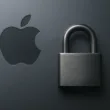The Hidden Challenges of Speaker Diarization You Never Knew Existed
Introduction
Speaker diarization, the process of determining “who spoke when” in audio streams, plays a pivotal role in audio processing. As advancements in artificial intelligence continue, particularly in real-time transcription, the importance of effective diarization grows. This technology enhances clarity and analytics by accurately separating audio into speaker-specific segments, thus aiding various processes across industries.
Background
The roots of speaker diarization trace back to the need for structured and searchable audio content. Its primary purpose is to label segments of audio streams by speaker identity, transforming chaotic data into an organised form. Historically, this involved simple methods, but as the demands across fields like call centres, legal, and media increased, the technology evolved. It feeds into systems requiring clear speaker differentiation such as conversational AI and meeting transcriptions.
Trend
Recent developments have significantly impacted speaker diarization. One notable advancement is the utilisation of multilingual deep embeddings, enhancing the system’s ability to process diverse voices and languages. Real-time transcription tools have also become more sophisticated, providing rapid and accurate outputs. These innovations are largely driven by the integration of powerful neural network models capable of managing more complex audio environments efficiently.
Insight
Despite technological progress, speaker diarization faces challenges that remain elusive. Overlapping speech presents a significant obstacle as multiple speakers talking simultaneously create confusion for algorithms. Noise management, particularly in imperfect recording environments, also poses problems. The need for solutions that can robustly handle diverse and dynamic soundscapes is more pressing than ever.
Forecast
Looking ahead, the evolution of speaker diarization is likely to focus on improving accuracy and efficiency to meet future demands. As technologies mature, there’s an expectation for diarization tools that can seamlessly integrate with other advanced systems. Emphasis will be placed on enhancing capabilities to manage acoustically challenging environments, ensuring results are consistent across various use cases.
Practical Steps for Organisations
Organisations aiming to harness speaker diarization should consider both cloud-based and open-source solutions to suit their unique needs. Options such as AssemblyAI and SpeechBrain offer diverse features tailored to either convenience or customisation. A thorough assessment of these tools against organisational needs will aid in selecting the best method to achieve effective and accurate results. Stakeholders should keep abreast of ongoing improvements and align their strategies accordingly.
If this exploration piqued your interest, feel free to share your thoughts or experiences in the comments.









